"Required Reading" is an ongoing series where we look at some of the ancillary media related to our favorite games; from books, to comics, to films. We'll take a look at the story behind the creation of the piece, if any, and review the quality of the work as a whole. Finally, we'll discuss whether it adds anything of substance to the narrative of the franchise. Today, we'll be taking a look at...
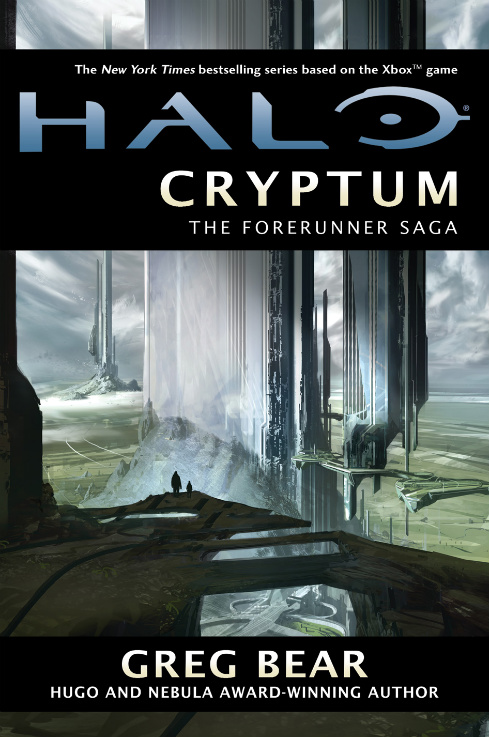
The history of Forerunners will soon conclude.
When Halo was released for the Xbox it was a game-changer. Not only did the game revolutionize the way console shooters controlled, but it revealed a universe full of interesting locations and enemies; an amalgamation of bits and pieces from the most resonant Sci-Fi series' in pop culture, with just enough depth and mystery to get players invested in the adventures of the verdant cyborg Master Chief and his sassy AI guide.
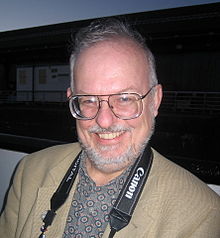
As the series continued and the universe was expanded and more thoughtfully detailed, Halo's backstory began playing a more important role in the events of the games, although it was purposefully obfuscated and withheld from the audience and the characters within. As the first game trilogy in the franchise came to a close and a sequel trilogy was in the planning stages, it was decided that the story of the enigmatic Forerunner race, foundation of much of the universe's technology (including the Halos themselves), must finally be told. This was an opportunity for the people behind the series to finally reveal long-teased answers to questions that were integral to the adventures of Master Chief that would be difficult to tell within the confines of a shooter.
Aware of the difficulties in laying the foundations of an already existing popular universe, the acclaimed sci-fi author Greg Bear was ultimately chosen to take on the responsibility of filling in history and sowing the seeds for events that would take place 100,000 years after this new book trilogy: The Forerunner Saga.
Death. Destruction. Massive Power.
Cryptum is the story of a young Forerunner named Bornstellar who rejects his society's norms and searches for his place in the universe. He finds his way to Erde-Tyrene, a conservation planet, where he hires two native primitive humans to help him search for treasure. After a series of events guided by intuition, Bornstellar finds a Cryptum, part meditation chamber and part prison, where he releases an ancient Forerunner warrior, the Didact. Now guided throughout the galaxy by his new mentor, Bornstellar learns much more about the history of his universe and the role the Forerunners play in shaping events.
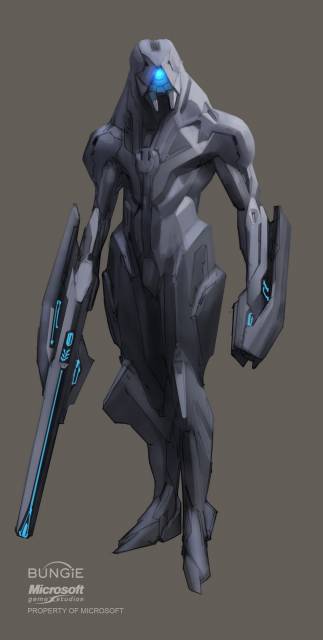
For the most part, that is the entirety of Cryptum. Pacing is a major issue in this story. The novel starts out at a leisurely pace and that doesn't change until well past the midpoint of the book. Cryptum is very much a set-up for the rest of the trilogy, more interested in introducing the universe and the characters that will play a part in upcoming events than showcasing character development or scenes with any meaningful action. Exciting scenes are implied to have just taken place before our characters get there or are left hanging to happen at some later point; it's all buildup. If this were the first third of a story, instead of the first third of a trilogy, it wouldn't be as much of an issue, but narrative exposition and set-up is not the most enjoyable read, especially when there's not much pay-off outside of the last few chapters in the book. Near the end, we are finally introduced to the closest thing resembling an antagonist, Mendicant Bias. At that point, the villain makes a move, our protagonist reacts to that move, and the novel just ends. The only people that are likely to find Cryptum an interesting read are the most hardcore of Halo fans looking for little details or allusions to locations, characters, and events from the game series, and to fill in the mysterious franchise backstory. There are only two issues with this: first, compared to the action-packed games in the series, Cryptum is incredibly slow, and secondly, with the release of Halo 4, many of this book's big reveals have been shown in a more interesting fashion and more concisely told, to boot. This is particularly evident in Halo 4's Terminals, which cover many of the major reveals in this novel, and then some.
Bornstellar, our main protagonist, doesn't help matters much. As a naive young Forerunner, he fits the bill as someone that needs aspects of this strange new universe explained to him, and thus, to the reader. However, he's also considered something of a rebellious slacker, at least in his own mind, and as such, doesn't really push events forward at all. He's incredibly passive in the story, allowing other characters to guide and manipulate him, making few decisions and taking few actions of his own. It doesn't make for a very interesting voice when a character is a blank page, there only to receive information to filter through to the reader. However, there are also some issues with the fact that the narrator is a Forerunner, which allows him to inherently understand and accept things for the, presumably, human audience that would normally require a bit more explanation. The Forerunners have an odd social system that involves predestination and mutation that is discussed frequently, but still confusing at times to pin down. This causes problems with the story as franchise history, too, as there are many little hints and implications for the Halo series that are more subtle and difficult to pick up on because locations and species are referred to by their Forerunner names, and only a few of them are ever referred to as we know them using clever wordplay, and even then very sparingly. From a narrative stance, it makes sense, but it makes it harder for those interested in the universe's backstory to pick up on all the little details of interest to them. The most interesting aspect of the character winds up being how he relates to his primitive human guides, and how that changes over the course of the story as he grows more aware of the events around him.
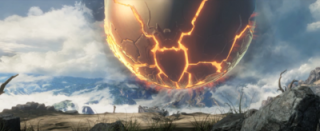
The fact that the Halo universe, as mentioned before, is pieced together from a number of other Sci-Fi franchises hampers some of the mystery when many of the revelations included in the novel have been seen in other stories before, yet it's still interesting, in a way, to see it all come together in the Halo universe. While the "all-story" of cyclical cultures and war has become all too common in gaming lately, it's still interesting to see the Forerunners discuss and investigate the Precursors, the society that may have created and shaped them, much like the Forerunners shaped the Covenant and Humans in the Halo games centuries later.
By the end of the novel things do pick up a bit, and Bornstellar does evolve into a more complex character, literally and figuratively, but it almost feels like too little too late. This novel probably isn't unique enough to be interesting to anyone not already familiar with the Halo universe and is so lacking in action and pacing that only the die-hard fans of the lore will be willing to sit through it until the end. Regardless, the sudden and abrupt cliffhanger ending, almost on par with Halo 2's infamous dangling thread, comes after such an exciting and interesting conclusion that I'm excited to read the sequel, Halo: Primordium.
Those who are ignorant of history are doomed to repeat it.
As mentioned, many of the revelations alluded to throughout Cryptum wound up being more expressly stated through the Halo 4 Terminals. The fact that humanity was once a technologically advanced race that warred with the Forerunners is now known to most Halo fans. The book takes place after humanity has been "regressed", but constantly refers to the emotions and reasoning behind that action, and the regret that even the Didact feels. Bornstellar lives in a colony on Mars (known to the Forerunners as Edom) before travelling to Earth (Erde-Tyrene) due to some subconscious imprinting by the Librarian, who "inspires" him and the two primitive humans he brings along to free the Didact and prevent the Halos from being used as weapons against the Flood. Much like the Spartans, and implied in a speech by Dr. Halsey in Halo 4, the Forerunners have evolved to incorporate their armor and life systems on an almost biological level, to the extent that it's rare to see a Forerunner out of his suit. They are all interconnected through a neural network of historical records and ancillaries, the Forerunner equivalent of AI like Cortana. These ancillaries are also capable of being input into physical forms, like the Monitors and Sentinels from the Halo games.
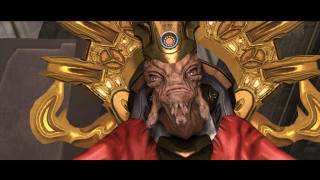
Yes, the Flood play a role in this book. As in Halo 4, it's revealed that the humans began "invading" Forerunner territory both to flee from, and contain, the Flood. They go into more detail on this in Cryptum, however. Apparently, an unmanned ship from uncharted space wandered into human territory, filled with clear tubes full of yellowish powder. Confused by this, humanity studied the powder and found it useless, except as a kind of catnip for their pets. Eventually this powder turned to a mold and started affecting the behavior of these pets, and eventually spread to humanity, where they began to grow protrusions and tentacles and turning on their fellow man in a blind rage. Humanity realized it had an epidemic on its hands and turned to its closest allies for aid. It appears that humans were actually united with a persuasive alien race known as the San 'Shyuum, the same species as the Covenant's Prophets in modern Halo games. Despite the elders in Cryptum having wheeled transportation rather than the hover chairs we know them as utilizing, it appears that even 100,000 years ago the Prophets were paranoid and deceitful. When the Forerunners responded violently to the humans encroaching on their territory, the Prophets abandoned the human race and surrendered. Humanity was returned to their home-world and devolved, while the Prophets were marooned on two planets and a moon with no weapons or off-world transport, under heavy Forerunner guard. Humanity had discovered a cure for the Flood, but it was lost due to the Forerunners' actions, and when the Flood returned and began infecting the Forerunners, they panicked, causing them to begin working on multiple responses, from Shield Worlds (like Requiem in Halo 4) to the Halos and the Ark.
Two important Forerunners that had direct impact on all of these events and are encountered by Bornstellar after the fact are the Didact and the Librarian. The Librarian appears to be much the same as she is in Halo 4 and in the Terminal videos. She's wise and benevolent, and deeply sympathetic with humanity after realizing our true intentions. The Librarian is the one who decides that we may be the best hope for the galaxy since we had once discovered a cure for the Flood. This is why humans are able to access Forerunner technology and the Covenant are not. We were chosen by her to carry the Mantle of Responsibility, the Forerunner belief that one superior species is responsible to protect the universe as a whole, explaining why 343 Guilty Spark refers to humans as Reclaimers. She's also the one that, while approving of the Halo project, commissions the Ark and the Halos to also serve as "Libraries" of as many of the universe's species as possible, to repopulate planets in the case that the Halos need to be fired. The Master Builder of these weapons, however, insists that the Flood are also preserved for weapons/cure research purposes; answering a question I've always had about the Library level in Halo: CE -- why did they have samples of the Flood on the very thing designed to destroy them? It's implied that the Master Builder had gone a little crazy at this point, which makes this seemingly nonsensical choice a bit more believable. The Didact, however, villain of Halo 4, is much more complex in the novel, as his character is a bit hard to pin down in the game. His children were all killed in the battle against humanity, and while he mourns the mistakes they made in completely regressing us as a species, stands by his decision to defend his culture against the "invaders". The sobering realization that humans were attempting to destroy the Flood is what makes him favor the Shield World option over the Halo defense, thinking that destroying life is a poor way of saving it. The Didact is seen as a traitor for publicly denouncing the Halo project, which leads to his exile in the Cryptum and their society's lessened use of his fellow warrior-servant class, the most elite of which were the Prometheans.

As the novel goes on, the Didact realizes that his enemies will not appreciate his return, and begins training Bornstellar and helps him mutate, in a form of forced puberty, into a higher class. As his mentor through this pubescent stage, Bornstellar has an imprinted bond with the Didact, and is able to access all of his memories, thoughts, and emotions. As time passes, the Didact's personality grows within him until he essentially has a split personality. When the Didact is presumed dead at the hands of the Master Builder for attempting to stop the use of the Halos, Bornstellar submits his will entirely, allowing the Didact to live on in him. Bornstellar is called as a witness in the trial against the Master Builder when the Forerunner capital is attacked by a rogue ancillary known as Mendicant Bias. Bias disappeared with one of the twelve existing Halos decades ago and was presumed lost, but returns at this opportune moment to destroy the Forerunners. It is implied that, after having been given too much power, Bias began to go Rampant, similar to the affliction Cortana has in the events of Halo 4. Bornstellar and a few others manage to flee to the Ark where they meet the Librarian, and Bornstellar essentially accepts his role as the Didact reborn after seeing memories of Didact's encounter with a Precursor. The Precursors are a long revered race, much like the Forerunners are to modern humans, that were claimed to have created the Forerunners before the Forerunners turned on them and destroyed all but one. This Prisoner implies that the Precursors are the source of the Flood, and it will punish the Forerunners for their betrayal.
Unless there are further twists in the next two novels in this trilogy, it appears that the Didact we meet is actually Bornstellar, with the Didact's memories and personality implanted. This would explain, to an extent, why Didact looks different from the other Forerunners, but makes his utter contempt for humanity more confusing, since Bornstellar grows more fond of our race as Cryptum goes on. Presumably this has yet to be explained. In the end, however, in the wake of Halo 4, Cryptum mainly gives more context and detail to everything we learn in that game. Unfortunately, some of these fine details are also contradictory, but supposedly rectifying these inconsistencies are part of the reason the third novel in this trilogy has been delayed a few months. In the end, we learn a bit more about the origins of the Flood, we learn that the Prophets and the Humans were once allies, and we learn that the "All-Story" of cyclical war and imperfect Gods began even before the Forerunners, with the Precursors. Unless you're really dedicated to the lore or you just want more detail, as a standalone book Halo: Cryptum isn't all that essential.
Have you read Halo: Cryptum? Do you plan to? What are your thoughts on the book or the universe as a whole? Feel free to share your thoughts in the comments below.
Thanks for reading!
For more Required Reading, follow the links below:
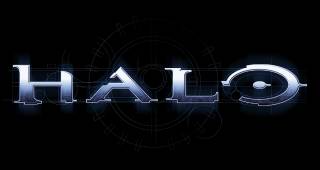
Log in to comment